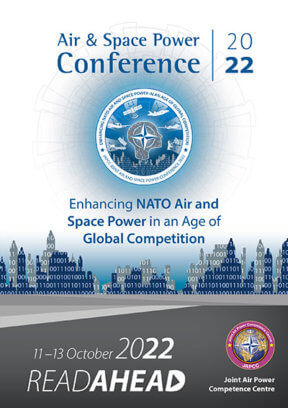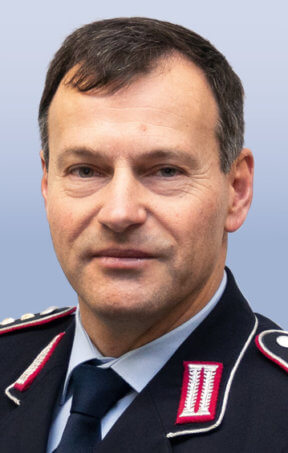Introduction
In general, we tend to have a rather positive relationship with the idea of competition, which is broadly accepted in sports, school, professional life and society. Liberal democracies also distinctly favour the contest between individuals and political parties to achieve the best policy outcome for society and the state.
Competition between states, however, rarely comes with such positive associations. Even though relations between states today are governed more than ever by a comprehensive set of legally binding rules that demand nations ‘settle […] international disputes by peaceful means […]’ and to ‘refrain from the threat of use of force against […] any state’1, ample examples demonstrate that this obligation is often disregarded. There seems to be an inherent potential for escalation, and, therefore, a particular need to ‘manage’ competition between states to prevent escalation into violence and armed conflict.
This article will help frame the term global competition and outline how it was used or referred to in recent national governments’ and NATO policy documents.
It’s About the Relative Status of Power in the World
In the context of the international system of states, global competition is a term used by political analysts to understand the interaction between state powers. The term provides a framework for analysing interstate relations and an analytical tool to support global security assessments. Competition between states can be understood as part of a continuum that sees cooperation and collaboration at one end and confrontation/conflict as well as violent clash/armed warfare at the other.2 This competition may escalate, but it ‘is not [per se] synonymous with conflict’.3
Particular relevance is given to the competition between states characterised as ‘Major’ or ‘Great’ Powers. They can be defined as those states that a) possess a range and quality of capabilities they can use to shape the world, b) have the apparent intent and will to use them, and c) are considered by others to have this special status. The National Defence University (NDU) Strategic Assessment 2020 calls them the ‘three substantive features’: ‘unusual capabilities’, ‘behaviour’ and ‘status attribution by others’.4
Entities like the European Union, but also some non-state actors, and ‘super-empowered individuals’ may decisively shape the international system’s development.5 However, focusing only on nation-states, most analysts will agree that in the contemporary era, particularly the United States, Russia, and China hold the attributes of a global Great Power.6 During the last decade, it became increasingly apparent that these states compete for influence in broader regional areas of the world and the rules and norms that govern international relations.
Global Competition is Nothing New
An analysis of interstate competition includes identifying and understanding the relevant dimensions of power available to states and its use in maintaining or enhancing their status. In 1987, British historian Paul Kennedy published his famous book ‘The Rise and Fall of the Great Powers’. He explored the period from 1500 to 1980 and the struggle between major powers to maintain or enhance their position relative to other states.7 His intellectual approach to looking at categories that are the basis for the power and the potential of states to gain or lose power relative to other states8 provided grounds for further academic analysis.
From a historical perspective, the world has seen many eras where states endeavoured to develop and increase the status of their power compared to other states and their competing ambitions. Most periods of history were characterized by distinct competition between countries, and most of them happened in a world of several major state powers. Therefore, today’s interstate competition is ‘unique but not unprecedented’.9
A survey of significant studies of interstate power competition, as done by Thomas F. Lynch III and Frank Hoffman, can help us understand interstate power competition’s categories and dynamics. This study also allows us to explore in which cases competition escalated into a violent clash and an enforced transition and under which conditions transitions happened without resorting to war.10
The bad news is: Historical case studies reveal that 75 % or more of the analysed competition resulted in major military clashes.11 On the other hand, the competition often involved simultaneous elements of collaboration and (non-violent) conflict.12 And evidence shows that a relative decline of the dominant state and a violent clash is ‘not predestined in any way’.13
Global Competition in Recent Policy Documents
The re-emergence of global interstate competition has already been articulated in several major policy documents and policy statements. To provide a short overview, this section will focus on those issued by the United States of America, the United Kingdom and NATO.
United States of America – the National Security Strategy 2017 and following documents
The United States National Security Strategy (NSS) 2017, published in December 2017, was the first national policy document released to the public that clearly characterized the current global system of states as ‘a competitive world’.14 In general, competition between states is regarded as the norm and, to be noted, ‘healthy when nations share values and build fair and reciprocal relationships’.15
China and Russia are classified as ‘revisionist powers’16 that ‘challenge American power, influence, and interests, attempting to erode American security and prosperity’. Both states are assessed to be ‘determined to […] expand their influence’17 as they ‘try to change the international order in their favour’.18 Notably, the NSS distinctly emphasizes that competition does not automatically mean hostility, nor [ ] inevitably lead[s] to conflict’.19
The United States National Defense Strategy (NDS) 2018, as a follow-on document issued by the US Department of Defense, firmly assessed that ‘China and Russia want to shape a world consistent with their authoritarian model – gaining veto authority over other nations’ […] decisions’.20 Consequently, the NDS emphasized that ‘inter-state strategic competition, not terrorism, is […] the primary concern in US national security’.21 ‘Long-term strategic competitions with China and Russia’ are outlined as the ‘principal priorities for the [Defense] Department […]’.22
Four years later, President Biden’s Interim National Security Strategic Guidance (INSSG), issued in March 2021, stated that […] alliances, institutions, agreements, and norms underwriting the international order […] are being tested’.23 The guidance acknowledged that ‘we face a world of rising nationalism, receding democracy, growing rivalry with China, Russia, and other authoritarian states’.24
China is regarded as ‘the only competitor potentially capable of combining its economic, diplomatic, military, and technological power to mount a sustained challenge to a stable and open international system’.25 Russia is assessed to remain ‘determined to enhance its global influence and play a disruptive role on the world stage’.26
To the national and international audience, the INSSG promised that regarding its security policy, the United States ‘will make smart and disciplined choices […] elevating diplomacy as […] a tool of first resort.27
United Kingdom – the ‘Competitive Age’ review and defence paper
In the same month as the Biden Administration’s guidance, the UK government published its integrated security policy review Global Britain in a Competitive Age.
Similar to the INSSG, the review assessed that ‘the nature and distribution of global power is changing as we move towards a more competitive and multipolar world’,28 and additionally offered a kind of definition for international ‘systemic competition’:
‘the intensification of competition between states and with non-state actors, manifested in: a growing contest over international rules and norms; the formation of competing geopolitical and economic blocs of influence and values that cut across our security, economy and the institutions that underpin our way of life; the deliberate targeting of the vulnerabilities within democratic systems by authoritarian states and malign actors; and the testing of the boundary between war and peace, as states use a growing range of instruments to undermine and coerce others.’29
Systemic competition ‘will determine the shape of the future international order’.30 Both Russia and China are identified as ‘systemic competitors’,31 but Russia is distinctly assessed to remain the ‘most acute threat’ to security in the Euro-Atlantic area.32
The UK’s Ministry of Defence paper Defence in a Competitive Age, also published in March 2021, underlined that ‘in an era of systemic competition, the distinctions between peace and war; home and away; state and non-state; and virtual and real become increasingly blurred’,33 and stated the need, due to ‘constant competition’, to ‘compete with and campaign […] below the threshold of armed conflict, and to understand, shape and influence the global landscape […]’.34
The NATO 2030 Report and follow-on statements
At their summit meeting on 3 and 4 December 2019, NATO leaders asked the Secretary General of NATO to initiate a ‘forward-looking reflection process […] to further strengthen NATO’s political dimension including consultation’.35 The so-called ‘Reflection Group’ issued its Report NATO 2030 – United for a new era on 25 November 2020. This report stated ‘a changing international scene characterised by the return of geopolitical competition’.36 This geopolitical competition is later defined as ‘the profusion and escalation of state-based rivalries and disputes over territory, resources, and values’.37 Notably, the report did not only assess Russia as ‘the most profound geopolitical challenge’ and ‘a threat across NATO territory’.38 It also outlines the ‘acute challenges to open and democratic societies’ arising from China ‘because of that country’s trajectory to greater authoritarianism and an expansion of its territorial ambitions’.39
Based on the NATO 2030 Reflection Group report and its recommendations, NATO Secretary General Stoltenberg offered his considerations on 4 June 2021, ten days ahead of the Brussels Summit 2021, at a public event on NATO 2030: a transatlantic agenda for the future. In his address, he used the expression ‘growing global competition’ for Russia and China, who are, as he states, ‘leading an authoritarian pushback against the rules-based international order‘. He assesses Global Competition as beneath ‘sophisticated cyber-attacks, disruptive technologies, brutal terrorism, the proliferation of nuclear weapons, and the security impacts of climate change‘, a defining element of a security environment that is ‘more complex and contested than ever before‘.40
The Brussels NATO Summit Communiqué of 14 June 2021 stated the ‘multifaceted threats, systemic competition from assertive and authoritarian powers’ faced by NATO and confirmed that ‘Russia’s aggressive actions constitute a threat to Euro-Atlantic security’. Additionally, the communiqué emphasized that ‘state and non-state actors challenge the rules-based international order and seek to undermine democracy across the globe’ and, with respect to China, stressed the particular challenges emanating from its ‘growing influence and international policies’ that NATO nations ‘need to address together as an Alliance’. China causes security concerns to NATO, therefore, NATO will engage China with a view to defending the security interests of the Alliance.’41
Conclusion and Outlook
Global systemic competition is not a new term; it describes the behaviour between major state powers that aim to increase their relative status of power. Various policy documents and statements have referred to this term in various ways. Be it a ‘competitive world’, ‘geopolitical competition’ or ‘systemic competition’, they have been used to describe the challenge for NATO and its member states to deal with a world where two major state powers, Russia and China, have embarked to influence the course of political developments in the world and more broadly, some main characteristics of the ‘world order’.
The attack on Ukraine, ordered by the Russian president, is a blatant attempt to enforce a change of the political order on the Eurasian continent. More than that, if successful, it may encourage other actors to use military force to achieve their objectives to shape political developments in their broader regional neighbourhood and divide the world into areas of national influence and power. These same actors often choose not to respect the decisions of states and peoples to pursue their own, self-chosen and peaceful path as independent actors in the international system of states.
An understanding of the characteristics, foundation and principles of global competition will be helpful to inform political and military leaders in preparing to make the right choices that will provide security for our nations.












